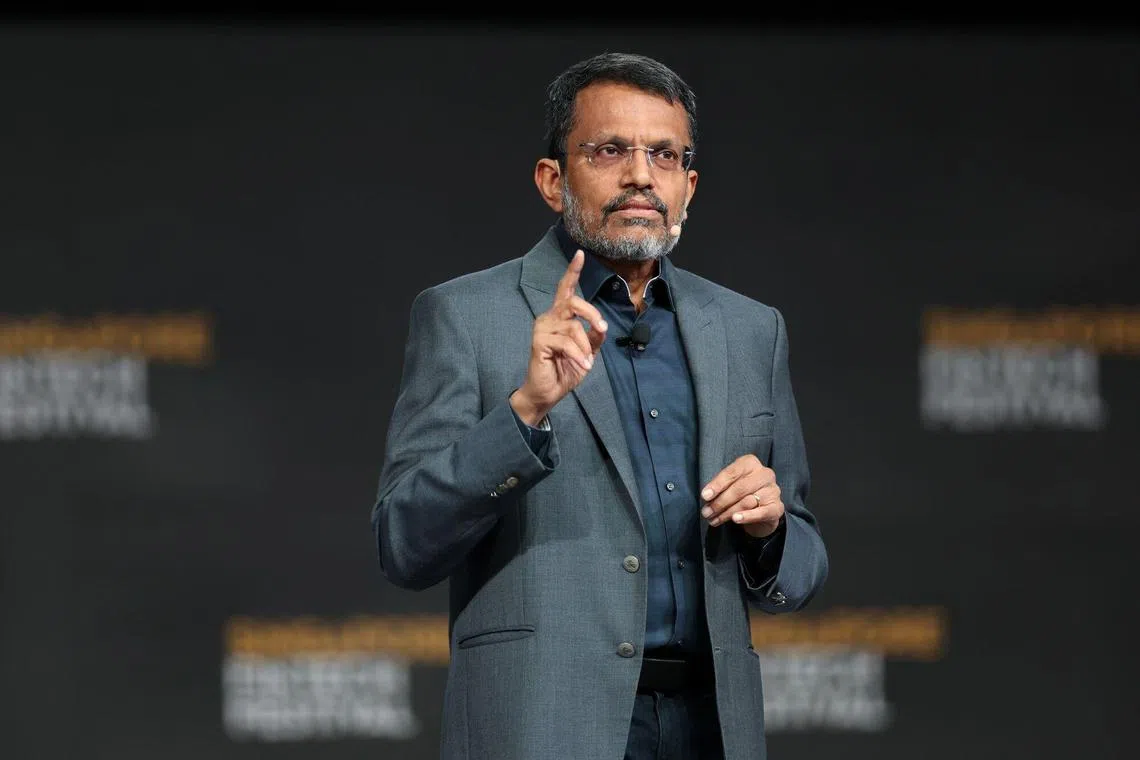MAS issues blueprint for the future of digital money
Sign up now: Get ST's newsletters delivered to your inbox

The blueprint was announced by outgoing MAS chief Ravi Menon at the Singapore Fintech Festival on Nov 16.
PHOTO: BLOOMBERG
Follow topic:
SINGAPORE - The Monetary Authority of Singapore (MAS) has set settlement ledger, tokenisation bridge, programmability protocol and name service as the four key building blocks to the use of digital currencies, as it moves to shape the financial ecosystem of the future.
These building blocks make up the blueprint for Project Orchid, which was launched by the authority in 2021 to look at the infrastructure needed to create, for instance, a digital Singapore dollar.
At the Singapore Fintech Festival on Thursday, outgoing MAS chief Ravi Menon
A settlement ledger is needed to record digital money transfers. It has supporting features such as native programmability and instant settlement of digital tokens.
A tokenisation bridge has to connect existing account-based settlement systems with ledgers that are compatible with tokenised forms of digital money. Tokenisation is the process of issuing a digital representation of an asset on a blockchain.
Programmability protocol, meanwhile, is required to use purpose-bound money (PBM) as a common protocol that sets the conditions for the use of digital money. PBM refers to a form of tokenised digital currency that is limited in how it can be used. For instance, a PBM can be imagined as a voucher with which users can safely exchange value without directly transferring funds.
The fourth building block is name service for verification purposes. It helps translate between unwieldy wallet addresses and alternative name identifiers.
Mr Menon said MAS will add four more trials to Project Orchid.
OCBC Bank and UOB are exploring the feasibility of enabling tokens issued by one bank to be accepted for retail payments by another.
Mr Leong Yung Chee, head of blockchain and digital assets at UOB, said the trial with OCBC will showcase that UOB-issued tokens are interchangeable with other bank tokens. Interbank settlement will be done through wholesale central bank digital currency (CBDC) on the backend.
“When we have a fungible, secure and convenient digital Singapore dollar, consumers will be the biggest beneficiaries as they will enjoy more options when it comes to digital and cashless payment.”
Digital payment and financial services group Ant International, digital financial services firm Fazz and ride-hailing operator Grab will start a pilot that uses the PBM concept to facilitate payments by Alipay users to GrabPay merchants.
E-commerce giant Amazon and lender HSBC are exploring the use of PBM in the tokenisation of payables from Amazon to merchants. This will improve merchants’ access to financing.
American bank JP Morgan is looking at the use of payment controls. This allows a bank’s institutional clients to hold deposit tokens and transfer them to clients who are outside the issuing bank’s direct customer base but within an agreed ecosystem.
To complement the digital money trials by the financial industry involving retail and corporate users, MAS will start developing CBDCs for wholesale interbank settlement in 2024.
Mr Menon said MAS will pilot the “live” issuance of wholesale CBDCs for the first time after it simulated issuance within test environments. The first pilot will involve the use of live wholesale CBDC to settle retail payments between commercial banks. Future pilots could include the use of live wholesale CBDC for the settlement of cross-border securities trade.
In his speech, Mr Menon said Singapore should work towards a network of interoperable systems that allows payment, clearing and settlement to take place instantaneously and seamlessly.
To get there, digital assets, digital money and digital infrastructure are needed, he added. This is where Project Orchid comes in and why MAS is promoting wholesale CBDCs, tokenised bank liabilities and regulated stablecoins.


